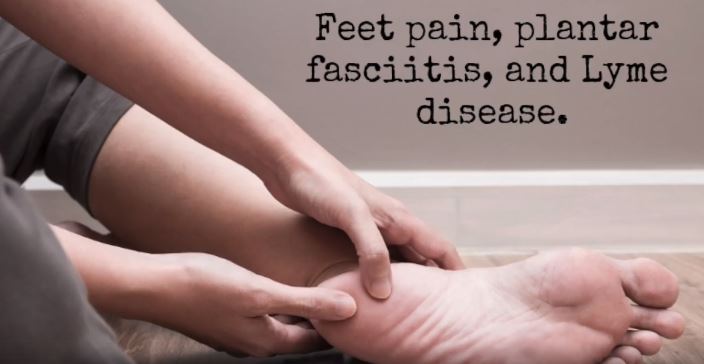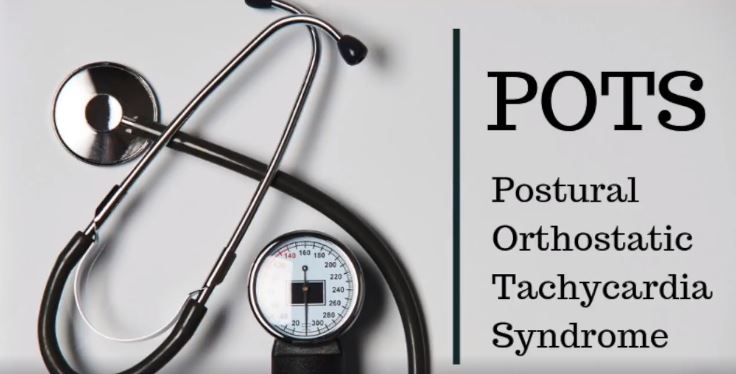Call for your appointment today 914-666-4665 | Mt. Kisco, New York

Looking for a Lyme disease news? Here are the top 10 Lyme disease news items for 2019 for www.DanielCameronMD.com.
1) A growing number of doctors are treating Lyme disease for longer than 21 days. Tseng and colleagues described 488 physicians who treated for more than five weeks in a review of insurance claims data in the Northeast USA.¹ They made several observations:
Tseng and colleagues described 488 physicians who treated for more than five weeks in a review of insurance claims data in the Northeast USA.¹ They made several observations:
- The average length of treatment was 86 days with a range of 35 to 404 days
- 48.8% were treated with more than 2 antibiotics
- 43% of patients were switched from one antibiotic to another
- 18% were prescribed combinations of antibiotics
1. Tseng YJ, Cami A, Goldmann DA, DeMaria A, Jr., Mandl KD. Incidence and Patterns of Extended-Course Antibiotic Therapy in Patients Evaluated for Lyme Disease. Clin Infect Dis. 2015.
2) Lyme disease symptoms may come and go. Fallon and colleagues described an example of fluctuating symptoms in Lyme disease subjects in their 1992 paper in Psychiatric Quarterly.¹ “A patient with late-stage Lyme disease might feel totally drained one day, the next day be able to function almost normally and day after experience such mental confusion as to be unable to focus on even the simplest of tasks.”
Fallon and colleagues described an example of fluctuating symptoms in Lyme disease subjects in their 1992 paper in Psychiatric Quarterly.¹ “A patient with late-stage Lyme disease might feel totally drained one day, the next day be able to function almost normally and day after experience such mental confusion as to be unable to focus on even the simplest of tasks.”
“The fluctuations make it impossible for patients to make plans, and may make it seem to friends, teachers, family members or even the patients themselves as if the symptoms were somehow under voluntary control or as if they were hysterical in origin.”
“Family dynamics, too, may be complicated by confused expectations of the sick member, and resentments may build when a person’s functional status, mood and ability to participate in family life seem inexplicably erratic.”
1. Fallon BA, Nields JA, Burrascano JJ, Liegner K, DelBene D, Liebowitz MR. The neuropsychiatric manifestations of Lyme borreliosis. Psychiatr Q. 1992;63(1):95-117.
3) Feet pain, plantar fasciitis, and Lyme disease. 
I often have seen foot pain in my Lyme disease patients. Some have described painful feet even when walking from the bed to the bathroom.
In a retrospective case series, Miller and colleagues described feet pain.¹
I refer patients to a podiatrist if the pain does not resolve with antibiotics. In the past, podiatrists would often diagnose the pain as a heel spur. More recently, podiatrists have diagnosed the pain as plantar fasciitis.
I find that foot pain often resolves with antibiotics for Lyme disease.
1. Miller JR, Dunn KW, Braccia D, et al. Lyme Disease Manifestations in the Foot and Ankle: A Retrospective Case Series. J Foot Ankle Surg. 2016;55(6):1241-1244.
4) Lyme disease can be as difficult to diagnose as multiple sclerosis.
Multiple sclerosis can be difficult to diagnose.
“Symptoms may be difficult for patients to characterize and for clinicians to interpret; findings on examination may be subtle; imaging is not always specific, and the differential diagnosis of possible demyelinating disease is quite broad,” writes Katz Sand.¹
Lyme disease can be difficult to diagnose for the same reasons.
1. Katz Sand IB, Lublin FD. Diagnosis and differential diagnosis of multiple sclerosis. Continuum (Minneap Minn). 2013;19(4 Multiple Sclerosis):922-943.
5) A list of common symptoms in Lyme disease patients. Dr. Bransfield described a list of common symptoms seen in Lyme disease patients in his psychiatric practice.¹ The more common symptoms seen in Lyme borreliosis include poor attention span, being easily distracted by frustration, sensory hypersensitivity causing patients to feel overwhelmed, poor short-term memory, dyslexia symptoms, slow processing, executive dysfunction, brain fog, poor time management, depersonalization, intrusive images and thoughts, musical hallucinations, low frustration tolerance, abrupt mood swings, impulsivity, paranoia, explosive anger, suicidality, anhedonia, and decreased productivity.
Dr. Bransfield described a list of common symptoms seen in Lyme disease patients in his psychiatric practice.¹ The more common symptoms seen in Lyme borreliosis include poor attention span, being easily distracted by frustration, sensory hypersensitivity causing patients to feel overwhelmed, poor short-term memory, dyslexia symptoms, slow processing, executive dysfunction, brain fog, poor time management, depersonalization, intrusive images and thoughts, musical hallucinations, low frustration tolerance, abrupt mood swings, impulsivity, paranoia, explosive anger, suicidality, anhedonia, and decreased productivity.
Other symptoms included depression, long-duration panic attacks, social anxiety, generalized anxiety, obsessiveness, non-restorative sleep, appetite disturbances, decreased libido, headaches, cranial nerve symptoms, neuropathy, autonomic nervous system symptoms, musculoskeletal symptoms, gastrointestinal symptoms, genitourinary symptoms, cardiovascular symptoms, fatigue, chronic pain, and alcohol intolerance.
1. Bransfield RC. Neuropsychiatric Lyme Borreliosis: An Overview with a Focus on a Specialty Psychiatrist’s Clinical Practice. Healthcare (Basel). 2018;6(3).
6) Fleeting lightheadedness and POTS associated with Lyme disease. Some of my Lyme disease patients experience fleeting lightheadedness as they get up. Some of them have more severe lightheadedness.
Some of my Lyme disease patients experience fleeting lightheadedness as they get up. Some of them have more severe lightheadedness.
Some patients are diagnosed with postural orthostatic tachycardia syndrome (POTS), “an autonomic disturbance characterized by the clinical symptoms of orthostatic intolerance, mainly light‐headedness, fatigue, sweating, tremor, anxiety, palpitation, exercise intolerance and near syncope on upright posture,” writes Agarwal.¹
POTS has been described in Lyme disease patients.² I have seen fleeting lightheadedness and POTS resolve in some of my patients after treating their Lyme disease.
1. Agarwal AK, Garg R, Ritch A, Sarkar P. Postural orthostatic tachycardia syndrome. Postgrad Med J. 2007;83(981):478-480.
2. Kanjwal K, Karabin B, Kanjwal Y, Grubb BP. Postural orthostatic tachycardia syndrome following Lyme disease. Cardiol J. 2011;18(1):63-66
7) The Earliest Signs of Lyme disease. The earliest sign of Lyme disease might not be an erythema migrans rash, Bell’s palsy, heart block, or Lyme arthritis. Instead, the earliest sign of Lyme disease might be a clinical presentation such as Chronic neurologic manifestations of Lyme disease, Lyme Encephalopathy, Neuropsychiatric Lyme disease or Post-Lyme disease syndrome.
The earliest sign of Lyme disease might not be an erythema migrans rash, Bell’s palsy, heart block, or Lyme arthritis. Instead, the earliest sign of Lyme disease might be a clinical presentation such as Chronic neurologic manifestations of Lyme disease, Lyme Encephalopathy, Neuropsychiatric Lyme disease or Post-Lyme disease syndrome.
The earliest sign of Lyme disease might also be a group of symptoms such as fatigue, poor sleep, poor concentration and memory, sadness or irritability, headaches, visual disturbances, lightheadedness, joint pain or POTS.
The earliest sign might be another illness that mimics Lyme disease such as migraines, mood disturbance, multiple sclerosis, fibromyalgia, chronic fatigue or an autoimmune neuropsychiatric disorder known as pediatric acute-onset neuropsychiatric syndrome (PANS).
8) Relying on Lyme disease tests rife with problems. Most cultures are negative unless taken from the margins of an erythema migrans rash of Lyme disease. Serologic tests measure the body’s immune response rather than an infection. Western blot tests can be negative. Meanwhile, serologic tests for co-infections can also be negative.
Most cultures are negative unless taken from the margins of an erythema migrans rash of Lyme disease. Serologic tests measure the body’s immune response rather than an infection. Western blot tests can be negative. Meanwhile, serologic tests for co-infections can also be negative.
I have to use clinical judgment when the serologic tests are negative. But I also evaluate my patients for other conditions even if the tests are positive.
9) Profound flare-ups of Lyme disease symptoms. “The worsening of symptoms during initiation of antibiotic treatment is thought to be a variant of Herxheimer reaction as seen in the treatment of syphilis,” writes Fallon.¹ “The reaction can sometimes be difficult to distinguish from an allergic reaction to the medicine.”
“The worsening of symptoms during initiation of antibiotic treatment is thought to be a variant of Herxheimer reaction as seen in the treatment of syphilis,” writes Fallon.¹ “The reaction can sometimes be difficult to distinguish from an allergic reaction to the medicine.”
Fallon and colleagues described three examples:
- “Some patients in our sample experienced panic attacks for the first and only time when starting on antibiotics.”
- “Others have reported an intensification of depressive symptoms, suicidality or anxiety.”
- “Many reported an increased startle response and photophobia during the first few days of antibiotic treatment.”
I have seen worsening of symptoms in my patients not only when starting antibiotics but at other times in their illness.
1. Fallon BA, Nields JA, Burrascano JJ, Liegner K, DelBene D, Liebowitz MR. The neuropsychiatric manifestations of Lyme borreliosis. Psychiatr Q. 1992;63(1):95-117.
10) Was Babesia considered when you were diagnosed with Lyme disease? Babesia is a parasitic infection harbored by the same tick that transmits Lyme disease.
Babesia is a parasitic infection harbored by the same tick that transmits Lyme disease.
Babesia can present as a life-threatening or an asymptomatic illness. The infection can be confirmed with a thick smear, PCR, or antibody test. However, like Lyme disease, there are cases that cannot be confirmed with laboratory testing.
The high frequency of a concurrent Lyme disease and Babesia reminds the doctors of the importance of considering treating for BOTH tick-borne infections. “Up to a fifth of Lyme disease patients experience concurrent babesiosis,” writes Diuk-Wasser.¹
50% of patients present with night time sweats. Antibiotics for Lyme disease are not effective for Babesia. Instead, a combination of atovaquone and azithromycin has been effective.
1. Diuk-Wasser MA, Vannier E, Krause PJ. Coinfection by Ixodes Tick-Borne Pathogens: Ecological, Epidemiological, and Clinical Consequences. Trends Parasitol. 2015.
Keep up with the last Lyme disease news. Find the latest Lyme disease news from Dr. Daniel Cameron at www.DanielCameronMD.com.




Nothing on Prevention.
The prevention articles did not make the list.